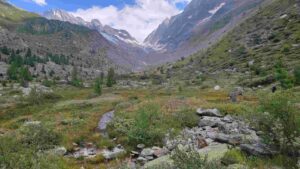Abstract/Description
Mountains cover more than 25% of the earth surface, where some billion people live, provide a wide variety of ecosystem services and are essential for improving human well-being. However, they are home to about half of the global biodiversity focuses. SDGs 3, 11, 13 and 15 are the objectives most closely linked to mountain ecosystems. Mountains are “biodiversity hotspots” and, at the same time, they present very fragile ecosystems. The changing orography, i.e. the contrast between sunny and shady areas, the altitudinal difference, which influence the precipitation and temperature gradient, and the landscape heterogeneity, imply the environmental conditions provide a great variety of ecological niches, which helps to increase the biodiversity. So, mountains are very sensitive areas both to climate change and to socioeconomic and land-use changes. The higher Galician mountains are located on the border between eastern Galicia, western Asturias, and León and Zamora provinces. The land use system in the eastern Galician mountains was an agricultural-silvicultural-grazing model adapted to the variety of the mountain environment, based on cereal crops and extensive browsing with orchard crops or fruits. This socioeconomic pattern has shaped the current landscape. Agricultural land is located at the bottom of valleys and the villages in the middle slopes with a sunny orientation. The shady areas, located a great distance from population centres and with high humidity, after the intensive exploitation of the forests suffered from ancient times for the use of wood, are currently hardly affected by anthropogenic pressure and act as refuges for the best primary forest examples. The landscape dynamics in the last century were marked by the evolution of the forest area. So, to understand the current state and future predictions, it is necessary to know the history of these forests. The aim has been to analyse the natural evolution of deciduous broadleaved forests in the Eastern Mountains of Galicia. The historical data can be used now and in the future as a complementary tool to develop conservation strategies.


